Assignment 4
1. Introduction
Discover the world with AR Globe – play and learn, more than the traditional globe, a brand-new experience for children. 3D earth, 3D landmarks, 3D animals. Use your fingers to explore, to learn, to create.
The in-progress screenshots of the application are as below, which illustrate the crucial scenes and functions. While the user scans the target image, a 3D virtual globe with architectural objects will appear by default (Figure 1). As the user clicks the button animal, it will change to show animals (Figure 2).

When the user chooses one of the objects, such as the Eiffel Tower, the corresponding description will appear (Figure 3). Users can click the trumpet icon to trigger the voice as well. If the user clicks the zoom icon, it will go into a detail page for the chosen object, which can be rotated and scaled as well (Figure 4).

2. Description of application
The application is implemented using Augmented Reality (AR), which allows users to turn flat pictures into virtual diorama models displayed in 3D through the cameras of different devices. Users can interact with the globe through on-screen buttons with different functions to obtain different effect displays, such as animal models, architectural models, text displays, sounds, etc. The globe is an educational tool that can stimulate children's learning, stimulate children's interest in learning, and learn about the world through mobile phones at home, helping children to open up broader horizons and horizons, so the potential users of this application are children and parents.
First of all, the AR globe adds the effect of AR augmented reality to the traditional globe. It breaks through the single static limitation of the traditional globe. It can add unlimited content and can display a lot of encyclopedia content in a 3D dynamic form. Therefore, it has been warmly welcomed by the market. However, its use method is quite different from that of traditional globes. Earth AR is a special feature that allows the globe to appear in a three-dimensional effect. Compared with ordinary globes, it can display specific creatures, buildings, etc. in different positions on it. In the main interface, there will be two buttons for buildings and animals. For example, if the user clicks on the building, the globe can see the bird's nest with a strong three-dimensional sense in China, and the Statue of Liberty is displayed in the United States, and the user can click on the building to enter a page and zoom in on the building. Zoom out and 360-degree view of the scene. When clicking the animal option of the menu button, the globe can see kangaroos in Australia and pandas and other creatures in China.
Secondly, in addition to the strong sense of three-dimensionality, the globe ar will also add some animation effects and voice introduction functions. I believe that children can play with such globes all day long, and the interactive buttons and voice introduction are more lively and interesting. The whole use process is Inseparable from the camera. The application of this globe AR virtual reality technology makes the original dry and boring knowledge come alive. This allows users to learn or use the globe more richly and interestingly. Compared with the traditional globe, it will be more interesting, and it can improve the user's enthusiasm and learning motivation, and the learning effect will be better. Compared with boring globes, AR globes that can listen, see, and play will be more attractive to users, and at the same time, it will be more convenient and effective to improve children's memory, and even make them fall in love with learning, because a globe may be Children's enlightenment teachers, guide them to continuous learning and inquiry.
3. Description of the interface solution
The app uses AR technology, which turns a flat picture of the Earth into a 3D virtual model when the user scans the picture with a phone or computer camera. Augmented reality is important in the context of this app because it can combine the virtual and the real to enhance the experience. And augmented reality is easy to use, requiring only an image and a camera for potential users.
From the educational perspective, this app's potential users mainly are school-age children. The traditional way of teaching based on textbooks is not lively and interesting, and children's playful nature makes them difficult to concentrate. AR is more intuitive than the pictures in the textbook and can provide better teaching effect.
As suggested by Habgood and Ainsworth(2011), a well-designed educational game can stimulate children's interest in learning and enable children to learn more. This application is a good combination of science and technology and education, truly achieving edutainment. Moreover, children can interact with the earth in this application in this application, which gives children a different immersive experience. Finally, cultivating imagination and creativity is the core of education. The way the virtual and the reality are combined in AR can stimulate children's imagination and make children more creative.
From the marketing perspective, this application can be integrated with products such as globes and atlases. According to Tan, et al (2022), the rise of augmented reality (AR) technology presents marketers with a great opportunity to engage customers and transform brand experiences. We can imagine that if a globe includes our app, which can intuitively see the earth and increase the interactive function, the sales volume will surely increase greatly. In addition, adding AR to products does not require excessive capital investment, and the popularity of smartphones and tablets has given AR great device support. Users only need to install the APK file on the phone to use it, and the process of using is also very simple. AR has great benefits for both customers and dealers. On the one hand, customers can feel virtual in reality, which increases interactivity and interest, so as to have a better user experience. On the other hand, for dealers, adding AR to products can attract customers and enhance brand value, so as to seize a larger market share in the fierce market competition.
Therefore, AR technology is of great significance in this application environment. Because AR can not only make education more vivid and intuitive, but also has commercial value.
4. Interaction Design
To better illustrate how the users interact with this AR application, a storyboard of interaction design is created (Figure 5).

Figure 5: Storyboard of Interface Design
First of all, the potential users of this application are school-age children, who are easily been distracted while studying, and most of the existing teaching materials are paper versions or 2D electronic versions, which are less appealing. Therefore, an AR application that is attractive, interesting, novel, interactive and instructive could be a suitable choice to address the issue. In addition, the AR application is built as an APK package so it is easy to implement as long as the user has an android device (mobile phone, tablet, etc.) with a camera.
While the user scans the target image (which could be a map or a globe), an AR scene will be shown with a 3D earth as well as the 3D objects (such as landmarks, animals, languages, etc.) on it. With the 3D presentation, the AR application will be more intuitive and attractive to the children than traditional teaching materials such as books. Even though the globe, the images are still presented on a 2D plane. Children will be more willing to actively interact with the vivid objects.
The interactions designed for this application at this stage would include: a) Users can rotate the AR objects such as the 3D model of the earth to take a 360-degree observation. b) Users can tab on any of the countries on the virtual globe that they are interested in, and the corresponding images such as landmarks, typical animals, and local languages will be shown (depending on the settings). For example, if Paris is chosen, the 3D Eiffel Tower will show up with instructions. c) Users can scale the 3D objects with corresponding gestures if they want to see more details. d) Users can select different functions such as switching the items that are being displayed by clicking the virtual menu. For example, the default displayed items are landmarks, and they can be switched to animals.
All the interactions bring the users an immersive experience as well as the experience of edutainment. Considering the future market value, the next stage product would include richer learning content, such as adding voice narrations and simple animations. In addition, providing customized functions such as adding the user’s own design would be even better, which can e
5. Initial Technical Development
This project is designed to be used on smart devices, mainly using AR technology to develop in Unity, and using Vuforia to realize the scene.
At present, the application can achieve the following initial interaction. First, click the button to switch between the building and animal display modes. When the building button is clicked, the Earth will show the iconic buildings of different countries, and when the animal button is clicked, the Earth will show the representative animals of different countries. Second, when the user touches the earth with a single finger, the earth turns in the direction the finger moves. The Earth zooms in when the user touches it with both fingers. Finally, when users click on an animal or building, they can view the details. Click the horn in the upper left corner of the text box to play the voice, and click the fork in the upper right corner to enter the view of buildings or animals. Users can also zoom in or out of buildings or animals and rotate them for a closer look.
In the next phase, we will develop more interactive features, such as the ability to hear the animal when the user touches it. And include more geographical knowledge, such as showing the Earth's rotation, the revolution and so on.
6. Initial 3D model
There are several types of objects that can interact in this application. The first is the globe. When the user scans the picture, the globe will appear, and the user can control the rotation of the globe and zoom in and out. The second is the building model. When you turn the globe to a specific location, you can see the landmark buildings of the current location. Click on the building to view the introduction text of the building, and you can also zoom in and out of the building and view it in 360 degrees. You can also click the sound button. Choose whether to play the introductory text. The third is the animal model. Select the animal introduction in the application, and turn the globe to a specific location to see the iconic animals of the current location. Click the button to trigger the text introduction of the animal. At the same time, you can choose whether to play the introduction text through the sound button.
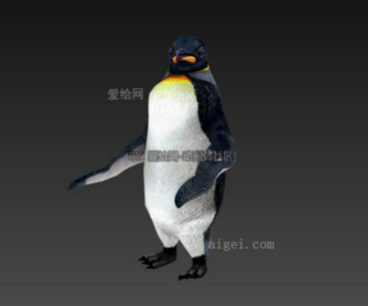




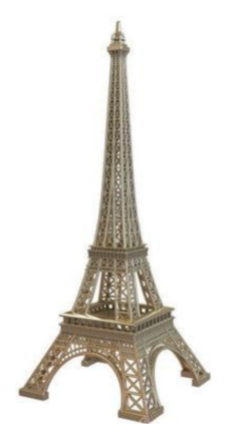
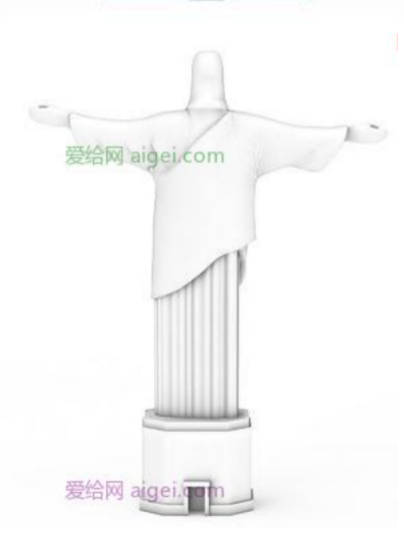
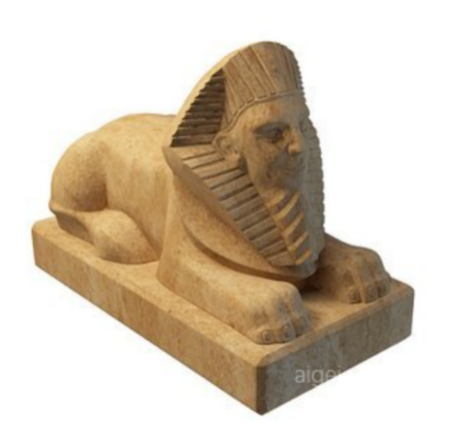
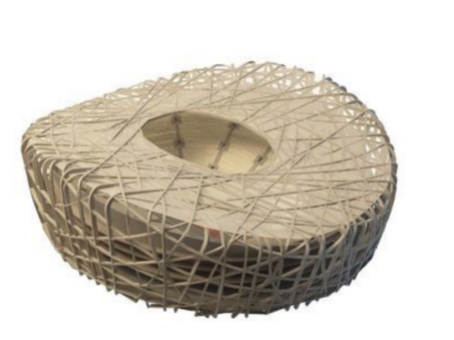

7. Conclusion
It's an augmented reality-based app. It aims to stimulate children's interest in learning and bring new experiences. While interacting with the globe, students can learn about a wide variety of geography and can explore landmarks and animals in different countries. This app provides a great tool for children to broaden their horizons and increase their knowledge in a relaxed and enjoyable atmosphere.
8. Reference
The earth model https://assetstore.unity.com/packages/3d/environments/sci-fi/earth-pbr-146888
Penguin model link: https://www.aigei.com/item/qi_e_bang_ding_1.html
Giant panda model link: https://www.aigei.com/item/xiong_mao_dai.html
Kangaroo model links: https://www.aigei.com/item/ao_da_li_ya_dai_2.html
African lion model link: https://www.aigei.com/item/3d_shi_zi_mo_xi_6.html
Polar bear model link: https://www.aigei.com/item/bei_ji_xiong_zi.html
The Eiffel Tower model link: https://www.aigei.com/item/ai_fei_er_tie_t_18.html
The statue of liberty model link: https://www.aigei.com/item/mei_guo_zi_you_2.html
The bird's nest model link: https://www.aigei.com/item/ao_ti_zhong_xin.html
The sphinx model links: https://www.aigei.com/item/shi_shen_ren_mi_2.html
Jesus like model links: https://www.aigei.com/item/bai_se_ye_su_di.html
Habgood, J & Ainsworth, E 2011, Motivating Children to Learn Effectively: Exploring the Value of Intrinsic Integration in Educational Games, The Journal of the Learning Sciences, DOI: 10.1080/10508406.2010.50802
Tan, Y-C, Chandukala, SR & Reddy, SK 2022, ‘Augmented Reality in Retail and Its Impact on Sales’, Journal of Marketing, vol. 86, no. 1, pp. 48–66, viewed 3 October 2022, <https: discovery-ebsco-com.ezproxy.utas.edu.au="" linkprocessor="" plink?id="f4b28c30-8097-3670-8196-9db17e7d45c7">. </https:>
Leave a comment
Log in with itch.io to leave a comment.